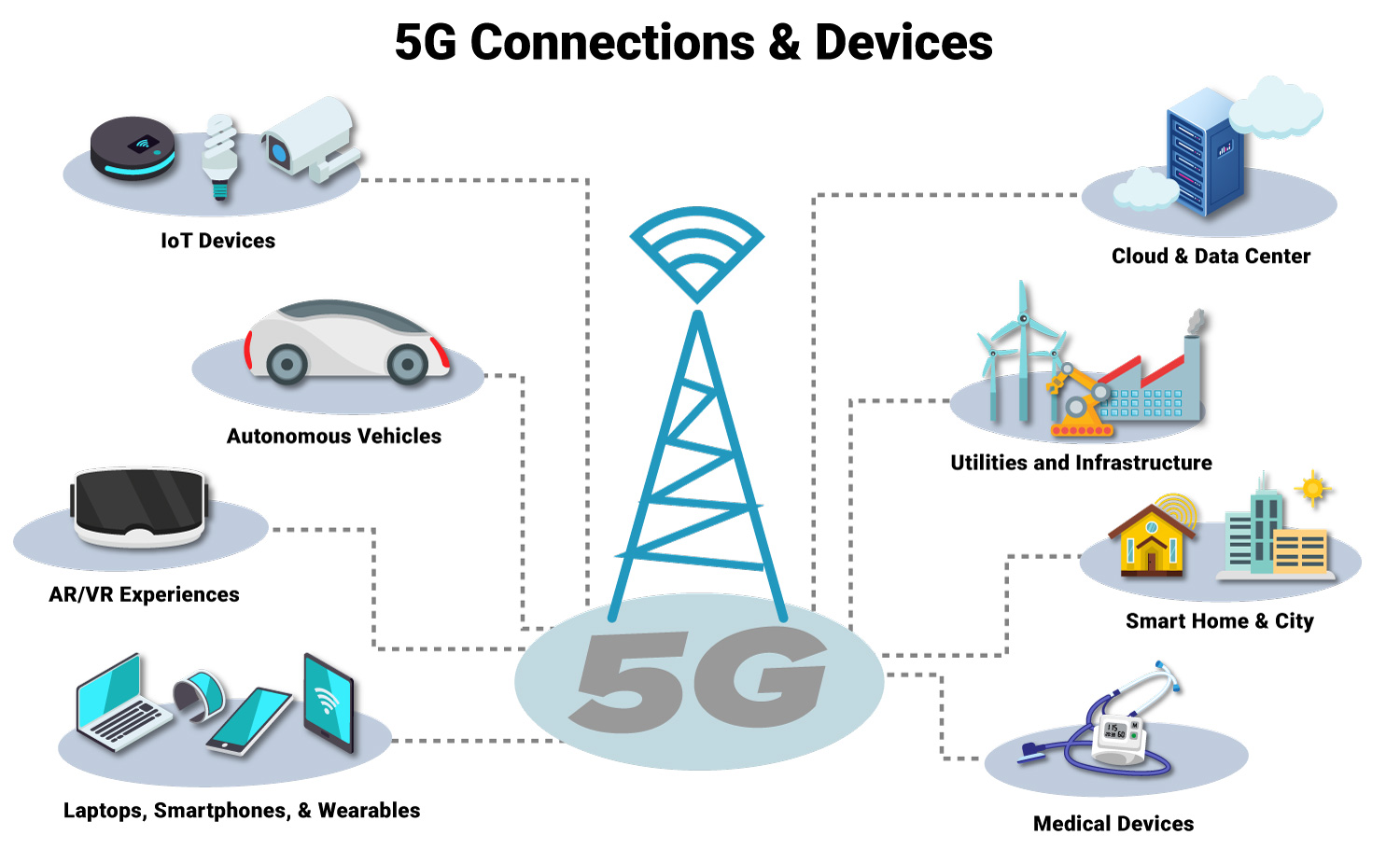The Impact of 5G on IT Infrastructure
Introduction
The arrival of 5G technology promises to revolutionize industries by providing faster, more reliable, and low-latency networks. As 5G networks continue to expand globally, the impact on IT infrastructure will be profound. Businesses across all sectors, from manufacturing to healthcare, will experience enhanced capabilities, enabling them to operate more efficiently and innovate at an unprecedented scale. At i4 Tech Integrated Services, we understand the transformative potential of 5G and its implications for IT infrastructure. This article will explore how 5G technology is reshaping IT infrastructure and what businesses need to consider to stay ahead in this new era.
1. Increased Network Speed and Efficiency
One of the most significant benefits of 5G technology is its dramatic increase in network speed and capacity. Compared to 4G, 5G offers download speeds up to 100 times faster, which enables businesses to handle more data-intensive applications. This increased speed enhances the efficiency of IT infrastructure in the following ways:
- Faster Data Transfers – Businesses can transfer large files and data between systems and devices with minimal latency, enabling real-time data processing and improving collaboration across teams.
- Enhanced Cloud Connectivity – With 5G, cloud-based applications and services will perform better, providing seamless access to data and resources stored in the cloud without delays, which is crucial for businesses relying on cloud solutions for IT infrastructure.
- Improved Remote Operations – 5G’s speed makes remote work more efficient by providing higher-quality video conferencing, faster access to company databases, and smoother collaboration tools.
2. Low Latency and Real-Time Processing
Latency is the delay between sending and receiving data over a network. 5G drastically reduces latency, making it ideal for applications requiring real-time communication and processing. For IT infrastructure, this improvement in latency is crucial for several reasons:
- Edge Computing – The combination of 5G and edge computing enables businesses to process data closer to the source, improving response times and reducing the burden on centralized data centers. Edge computing becomes more efficient with low-latency networks, leading to faster decision-making and more agile business operations.
- IoT and Smart Devices – Many businesses are adopting Internet of Things (IoT) devices and smart sensors to automate processes. 5G’s low latency ensures that IoT devices can operate in real-time, providing instant data collection and analysis. This is particularly important in sectors like manufacturing, logistics, and healthcare, where real-time data is essential.
3. Expanded Capacity for IoT and Connected Devices
The proliferation of IoT devices is one of the key drivers behind the need for 5G technology. IoT devices require a stable, high-capacity network to transmit data, and 5G delivers the necessary bandwidth to support millions of connected devices simultaneously. This impacts IT infrastructure by:
- Enabling IoT Scalability – With 5G, businesses can scale their IoT networks without experiencing congestion or delays. This is particularly beneficial for industries such as smart cities, agriculture, and logistics, where thousands of devices need to communicate in real-time.
- Improved Automation – The increased capacity and speed of 5G enable businesses to implement more advanced automation processes. For example, automated warehouses with IoT sensors can operate seamlessly with 5G, improving productivity and reducing human error.
4. Cloud Migration and Hybrid Cloud Environments
As 5G enables faster data transfer speeds and greater network reliability, businesses will increasingly move towards cloud computing. The enhanced capabilities of 5G make it easier for businesses to transition to cloud-based IT infrastructure, allowing for:
- Faster Cloud Adoption – 5G’s speed and reduced latency enhance cloud performance, making it easier for businesses to adopt cloud-based solutions for applications, storage, and data processing.
- Hybrid Cloud Solutions – With 5G, businesses can more effectively manage hybrid cloud environments, where some applications run on-premises while others operate in the cloud. The improved connectivity ensures that hybrid cloud solutions are efficient and scalable, supporting seamless data transfer between on-premises and cloud environments.
5. Network Slicing and Customization
Network slicing is a feature of 5G that allows businesses to create customized virtual networks tailored to specific needs. Each slice can be optimized for performance, security, and latency, depending on the requirements of the application. For businesses, this means:
- Tailored IT Solutions – Businesses can create dedicated network slices for specific applications, such as high-priority communication, real-time analytics, or mission-critical operations. This ensures that their IT infrastructure meets the specific needs of various departments or services.
- Improved Security – Network slicing can enhance security by isolating sensitive data and applications from other parts of the network. For industries like finance and healthcare, where data security is paramount, 5G’s network slicing offers a more secure environment.
6. Challenges and Considerations for IT Infrastructure
While the benefits of 5G for IT infrastructure are substantial, businesses must be mindful of the challenges and considerations involved in integrating 5G into their operations:
- Infrastructure Upgrades – Businesses may need to invest in upgrading their existing IT infrastructure, including routers, switches, and data centers, to ensure compatibility with 5G technology.
- Cost and ROI – Implementing 5G can be costly, and businesses must carefully assess the return on investment (ROI) by evaluating the long-term benefits of 5G adoption, such as increased productivity, efficiency, and scalability.
- Security Risks – As businesses adopt more connected devices and integrate 5G into their operations, the attack surface for cyber threats increases. It’s crucial to implement robust cybersecurity measures, including data encryption and secure network management, to mitigate risks.
7. The Future of 5G and IT Infrastructure
As 5G continues to evolve, businesses can expect even greater enhancements in network speed, capacity, and reliability. Future trends include:
- 6G and Beyond – Looking ahead, 6G will promise even faster speeds and lower latency, enabling new possibilities for IT infrastructure, such as real-time augmented and virtual reality experiences.
- AI and Automation – The combination of 5G and AI will lead to greater automation across industries, with businesses using AI to manage and optimize their IT infrastructure in real time.
- Global Connectivity – 5G will drive global connectivity, enabling businesses in remote and underserved areas to access high-speed networks, bridging the digital divide and providing new opportunities for growth.
Conclusion
5G technology is a game-changer for IT infrastructure, offering faster speeds, lower latency, and enhanced capacity for connected devices. For businesses, embracing 5G will unlock new opportunities for innovation, scalability, and efficiency. At i4 Tech Integrated Services, we are committed to helping businesses prepare for the impact of 5G, ensuring that their IT infrastructure is future-ready and capable of supporting the demands of tomorrow’s digital landscape.


